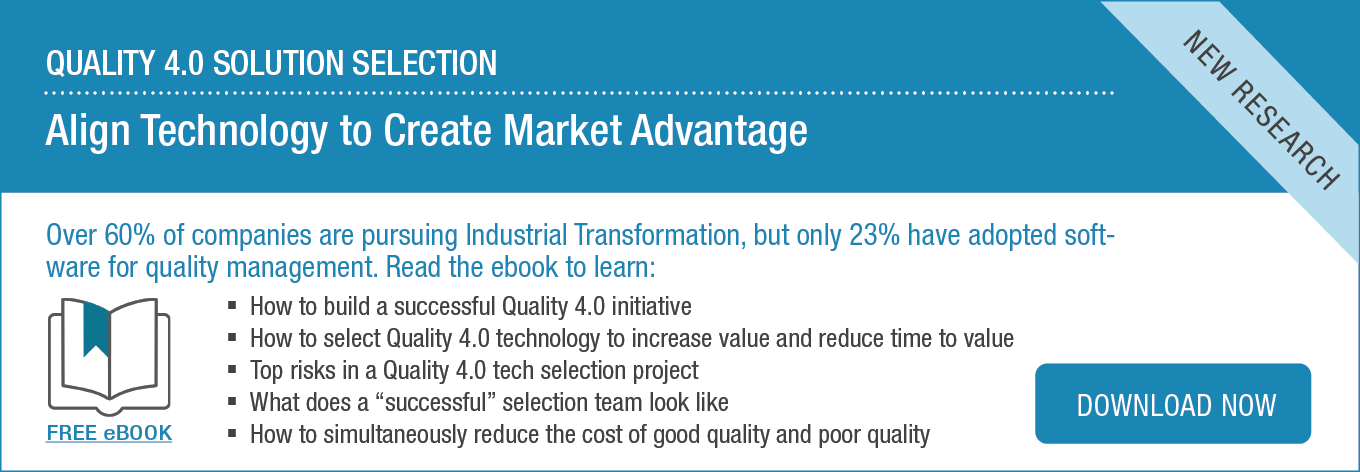Quality management maturity is, no doubt, a journey. If you speak with executives from some of today’s most successful companies, you’ll hear a number of similarities about this topic. Whether in regard to skill development, business processes, technology, performance management, or something entirely different, early on, decisions tend to be made reactively, almost always to fix a problem. But as maturity progresses, decisions gradually start being made with proactivity and, ultimately, predictability in mind.
We’ve found that not just progressing forward in the journey, but really accelerating in it requires a strategic plan—or a roadmap—that’s built upon both an internal gap analysis and a solid understanding of the maturity of close competitors. Coupling an internal gap analysis with a competitive analysis (generally driven by benchmark data), helps to highlight and prioritize areas in which a company may be most behind—or ahead. Following this strategy can drive incredible results over time.
Unfortunately, because there are so many potential improvement areas in the quality management sphere, it’s easy to feel overwhelmed and not know where to start. However, our recent infographic provides some perspective on the quality maturity journey. It shares several examples of the move away from immature quality toward market-leading quality across people, processes, and technology.

Share this infographic: Twitter | LinkedIn
As anyone who reads the news knows, things like product recalls happen constantly, which brings to light the fact that even some of today’s market leaders are still stuck in or in the process of transitioning away from this reactive mode of quality management. Why? Because they’re on the journey, too. There’s always room for improvement, especially with the quick pace of technological advancement happening in the space. Point is—if you’re not thinking about this in a strategic, long-term way, it’s really time to start.
